Are running shoes good for hiking? It depends on the shoe. Here’s how a more stable trail runner, a minimalist shoe, and a hiking boot all compare.
Planning to embark on a hiking trip? Whether it is your first or another in the series, you will face some questions regarding your plans. You might want to know whether you can go on an extended hike, how far you can trek, and other concerns with planning a getaway. As with any outdoor escapade, one may be unsure about footwear and the gear required for camping. Fortunately for us, we have shoes for every kind of activity. Running shoes are not only used by runners but also by hikers.
They come in a variety of styles as well as brands that cater specifically to each type of terrain and need. Running shoes will work great for trail running or even road running. However, they may not be ideal if you often intend to hike long distances. This does not mean they should be avoided entirely. Instead, there are several good reasons why you should use them when going out on an extended hike. We’ll discuss everything you need to know below.

Key Takeaways
- Running shoes can be used for hiking, but it depends on the trail’s condition.
- They offer less grip and durability compared to hiking boots, making them suitable for well-maintained or less rugged trails.
- Running shoes are lighter and more flexible than hiking boots, providing comfortable wear for long-distance treks.
- Hiking in running shoes may speed up their wear and tear due to exposure to harsh outdoor elements.
- For ultimate safety and comfort during hiking, specific hiking footwear is recommended as they are designed with better traction, protection, and support.
- Always consider factors like terrain, weather conditions, and personal comfort when choosing your hiking footwear.
What are the different types of running shoes?
Running shoes come in different brands and styles to suit your specific needs. Some are designed for long-distance running, like the Brooks Ghost series. Others have cushioning, which is great for people who suffer from plantar fasciitis or heel pain. They also come in various shapes and sizes, so you can find the perfect pair that will work best for you.
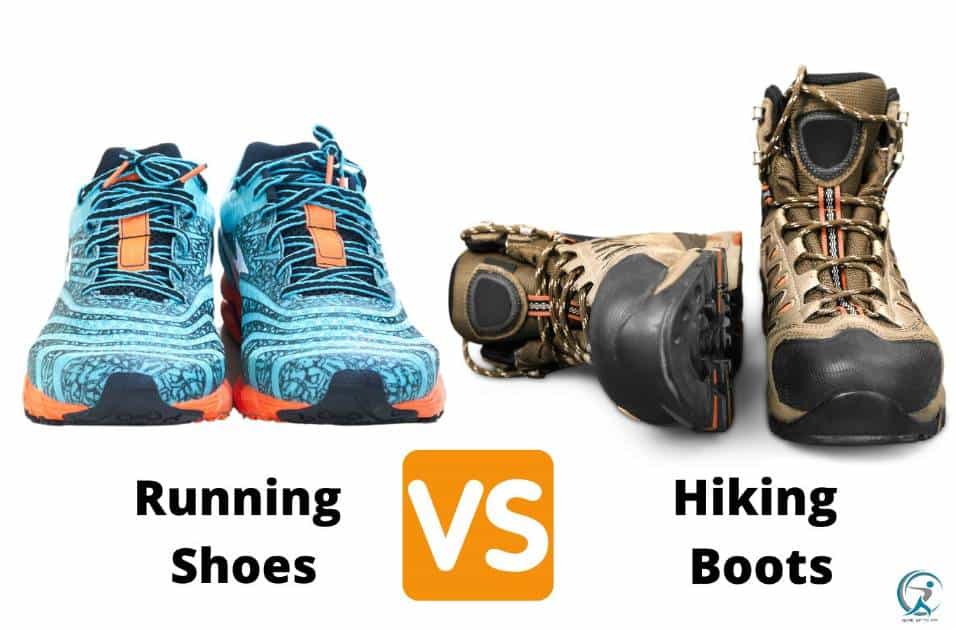
Compare hiking and trail running shoes.
Hiking shoes are meant to be durable, comfortable, and offer stability. They are typically made of soft materials with a thick sole, heel, and toe that provide traction on the ground. Trail running shoes, on the other hand, are more lightweight, with a thin sole and less support to help you move quickly through rough terrain. While hiking shoes provide optimal support for your feet, trail running shoes can offer various ankle mobility and flexibility options. Another difference between the two is in their outsole material.
Hiking shoes usually have a rubber or synthetic outsole. In contrast, trail running shoes will have a hard rubber outsole that provides better contact with the ground and better grip on varying surfaces. With this construction, runners will experience less slippage when tackling difficult trails or going up inclines. The last difference is in their size ranges. Hikers usually need something roomier than trail runners, who need something tighter to adjust to various terrains.

The benefits of using a good pair of hiking shoes
Hiking can be difficult for someone who doesn’t own the right shoes. It requires long hours of walking on hard surfaces, and it is important to have the right footwear to make your hike easier. You need comfortable shoes to avoid blisters and support while protecting rough surfaces when hiking. Hiking shoes typically have a strong, durable sole ideal for traction on uneven surfaces.
Running shoes provide excellent arch and ankle support and cushioning on the heels and balls of your feet. This makes them great for hiking in most conditions. They can also help when speed is needed during a race or other similar events. One more benefit is style. Many people enjoy wearing their running shoes when they go out on an extended hike because they look good in them (and are functional!).
You can find many different running shoes specifically tailored for outdoor activities like hiking while still looking stylish and professional. If you’re not sure which one to pick up, consider trying out some free runs or online reviews before making any final decisions.
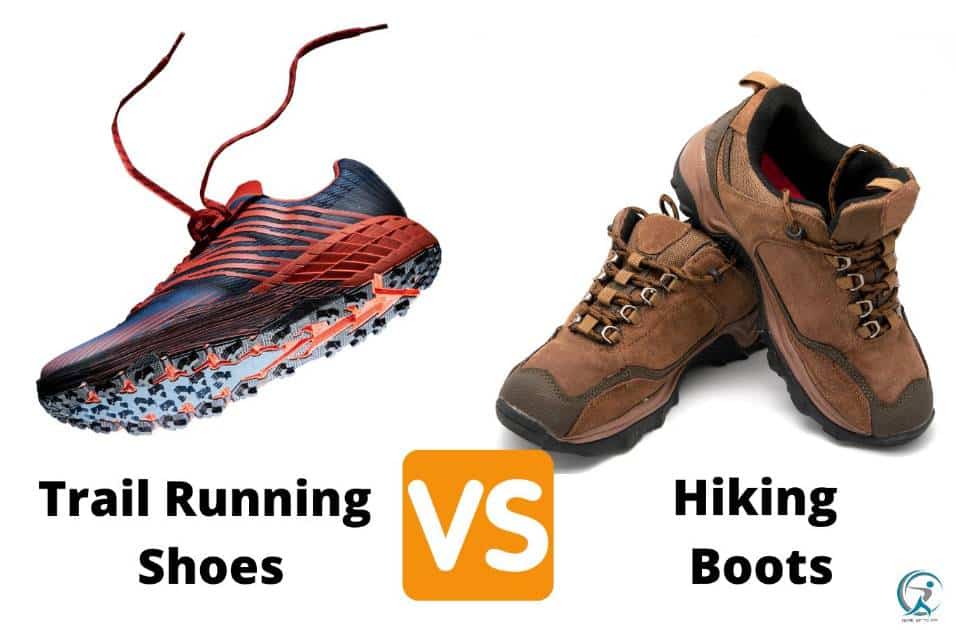
Running Sneakers vs. Hiking Boots
Some people might mistakenly assume that running shoes are the perfect footwear for hiking. They are lightweight, provide high performance, and great cushioning. While this is true to a certain extent, these attributes may not be beneficial when you need to hike long distances. Hiking boots are built with more rugged soles, thicker and denser materials, better grip on uneven terrain, and higher ankle support. In short, they have enough features to help one trek through any terrain.
Running shoes also have their upsides. They offer a lightweight feel and are great for trail running or road running. However, they can be dangerous if used for anything more. Running shoes are often designed with traction patterns on their soles, which provide a good grip on slippery surfaces like snow.
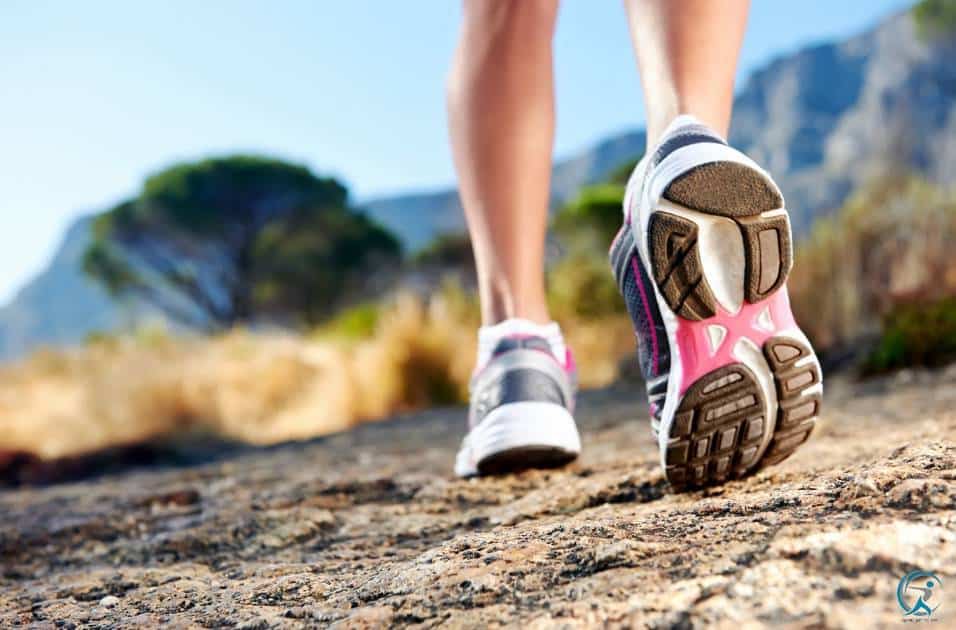
Are running shoes good for hiking?
The Pros
Running shoes have a lot of advantages over hiking boots. They are lightweight and flexible, which makes them ideal for long treks through rough terrain. They are also comfortable because they have a soft sole with thick padding that absorbs shock from every step you take. This is why runners don’t get tired after long distances because their feet are cushioned by their sneakers. You can walk all day long without feeling any pain in your feet or legs.
The Cons
The only disadvantage of using running shoes for hiking is that they don’t provide adequate ankle support like hiking boots do. You could twist your ankle while walking on uneven ground or slipping on wet rocks during river crossings without proper ankle support. Another disadvantage of running shoes is that they offer less traction than hiking boots when climbing steep inclines or traversing slippery surfaces like ice patches or mud holes on mountain trails.
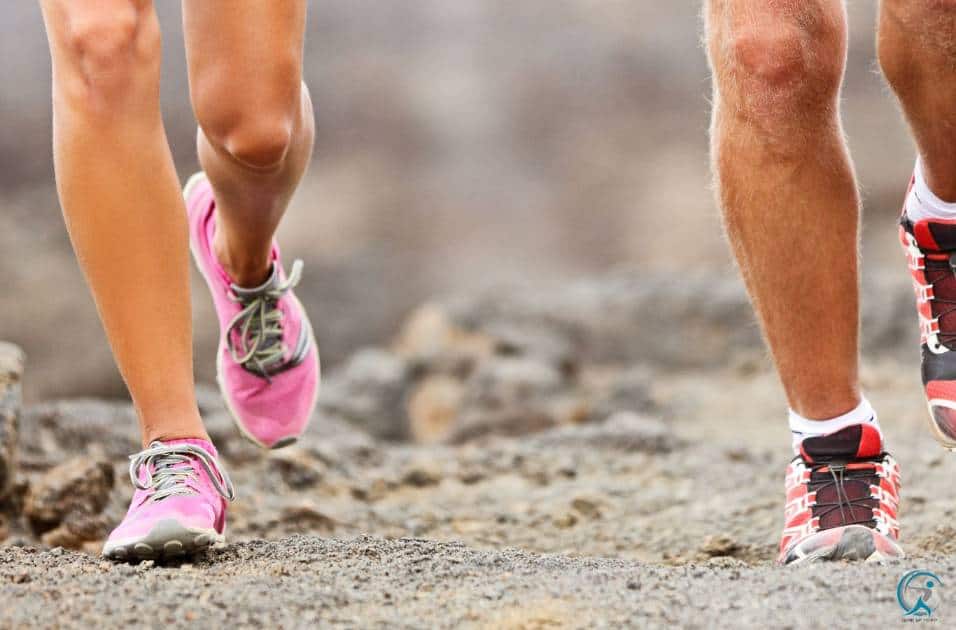
Trail running shoes vs. hiking shoes
Choosing the right shoe is important if you’re planning to go on a trail run. Trail running shoes are designed with different features than hiking boots or other outdoor footwear.
Trail running shoes are built with a cushioned midsole and flexible upper to allow for natural movement of your feet over uneven surfaces like trails and grassy areas. They also have a small heel drop (the difference between the height of the heel and the forefoot), which reduces the impact on your knees and ankles as you run.
Hiking shoes have thicker soles and stiffer uppers that help provide stability as you climb up hills or rocky terrain. Their laces are often reinforced with Kevlar threads for extra strength and durability in rough conditions. They also have a higher ankle collar than trail running shoes, which offers more support for your ankles if you need to walk in wet conditions or over slippery rocks.
Trail running shoes are lightweight enough to carry in your pack when you’re hiking through rugged terrain, so they can double as both hiking shoes and trail running shoes, depending on what type of terrain you’re covering that day!
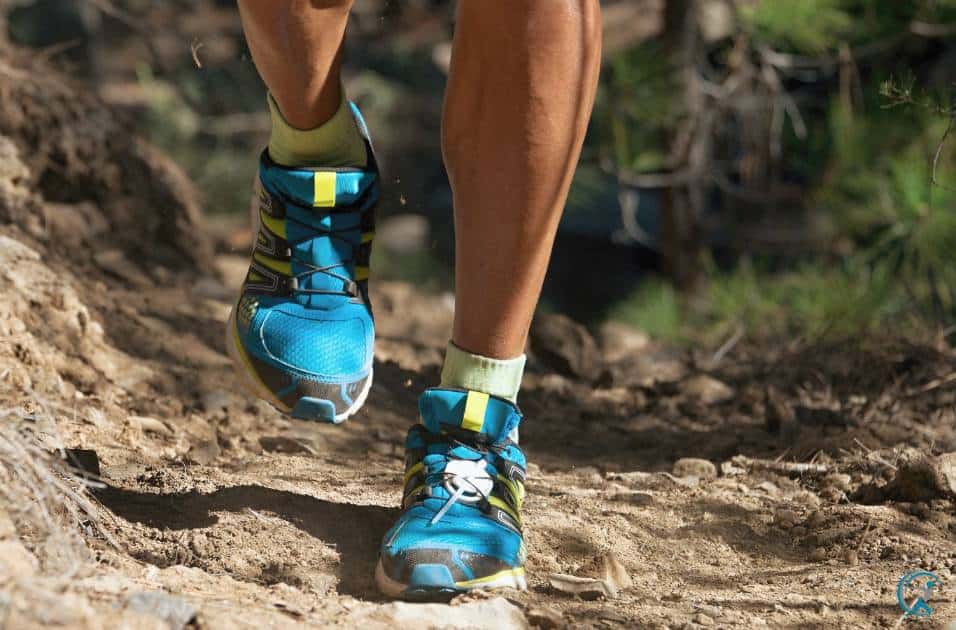
Wear trail running shoes for hiking.
Trail running shoes are made for running over uneven surfaces like trails or dirt roads. They have more cushioning than road running shoes as they absorb shock better, so you can run longer distances without getting sore feet or ankles. These shoes also have more flexibility and ground contact than other types of running shoes, which helps them move more naturally over uneven ground, so they can handle any obstacle they come across while running on trails.
Trail running shoes are also great for hiking because they grip well on slippery surfaces like mud or rocks, so you don’t slip when climbing steep inclines or climbing up hillsides.
If you want to hike comfortably, wear trail running shoes instead of regular sneakers because they provide more protection against injuries like ankle sprains. They provide extra support in key areas such as the foot’s arch.
Which type of shoe is best for hiking?
When it comes to hiking, you should consider the type of terrain that you will be exploring. Running shoes are more appropriate for flat surfaces such as sidewalks and city streets. If you plan on hiking in a forest or on steep inclines, you may want to opt for a boot instead. It is also good to remember that your shoe selection will vary depending on your personal preference; there is no one-size-fits-all when it comes to outdoor gear.
FAQs about whether running shoes are good for hiking
Are running shoes good for hiking?
Running shoes can be suitable for light hiking on well-maintained trails. However, for challenging terrains, hiking boots provide better stability and protection.
What’s the difference between running shoes and hiking shoes?
Hiking shoes are designed for grip and durability on uneven terrains. Running shoes emphasize on lightweight and flexibility, best for maintained surfaces.
Can I wear running shoes for long hikes?
For long hikes, especially on rough terrains, it’s recommended to wear hiking boots for increased ankle support, stability, and overall foot protection.
Do running shoes offer enough traction for hiking?
Running shoes may not provide sufficient traction for hiking, especially on slippery or rocky surfaces. Hiking shoes have deeper lugs for enhanced grip.
Should I choose waterproof running shoes for hiking?
If you expect to encounter wet conditions while hiking, selecting waterproof footwear, either running or hiking shoes, is a good idea for comfort and safety.
Conclusion
Whether logging a quick trail run or hitting the Appalachian Trail, you need running shoes to get the job done. But when planning your next wilderness excursion, it’s worth considering whether you should use hiking shoes or running sneakers. After all, your sneakers may be more suited to city life, while hiking shoes are a better choice for hiking. Although many people think running sneakers are the best option for hiking, many believe that hiking shoes are a better choice. With a good pair of hiking shoes, you’ll be able to hike on varied terrain, including steep hills and rocky surfaces, and have a more comfortable experience.
Hiking shoes also have additional features like ankle support and traction that can make your trip easier. Running sneakers are great for running on paved and flat surfaces, but when planning your next wilderness excursion, it’s worth considering whether you should use hiking shoes or running sneakers. A good pair of hiking shoes will help you hike on varied terrain and have a more comfortable experience.
As a veteran fitness technology innovator and the founder of GearUpToFit.com, Alex Papaioannou stands at the intersection of health science and artificial intelligence. With over a decade of specialized experience in digital wellness solutions, he’s transforming how people approach their fitness journey through data-driven methodologies.